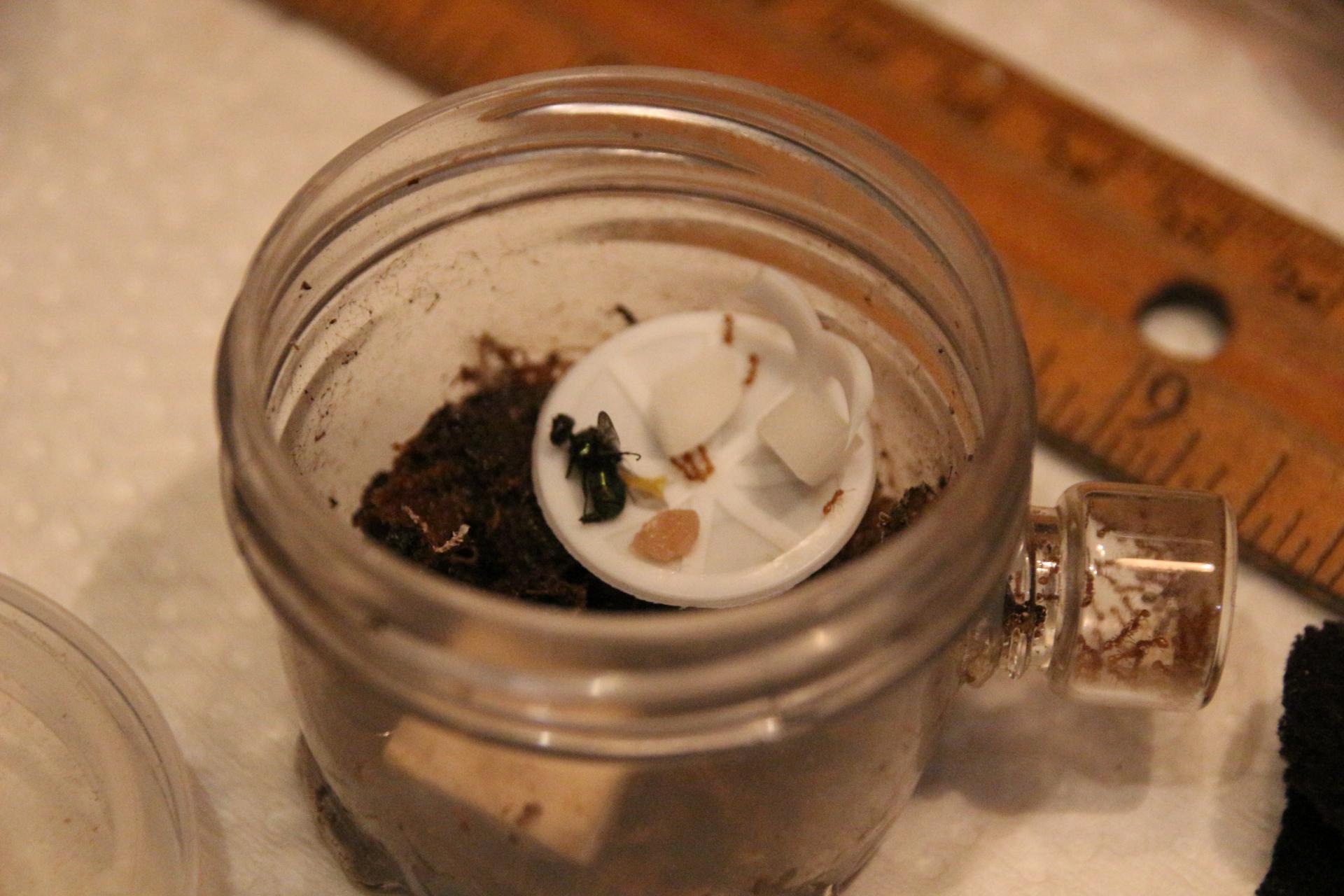As the fall colors creep in and the acorns drop to the ground, one little beetle species can be quite abundant. This beetle is called the Acorn Weevil. As larvae, they reside in acorns, and the adults roam the trees searching for a potential host for their babies. At this time of year, Acorn Beetle grubs are quite abundant, and can easily be found inside acorns or under rocks. I successfully tested out a method for raising Acorn Weevil larvae from a middle instar to the pupal stage. These pets are surprisingly cute, and are very easy to feed.
Things needed:
-Acorns (fresh)
-Acorn Weevil Grubs
-Small, short vial with approximately 3/4 inch diameter and a 1 1/4 inch height (can be bigger or smaller depending on the species) with a lid
-Syringe
-Tweezers (or fingers)
-Hammer
Getting the Weevils and the Food
Go out and find some weevil-inhabited acorns. The acorns inhabited by weevil grubs tend to be lighter colored. They also seem to come in clusters, with one branch connecting two or more acorns. Collect as many of these hollowed acorns as possible.
Then, take those acorns to a flat rock. Use a hammer to crack the acorn (Don't crush the acorn, just lightly tap it). Crack those acorns until you find two grubs. Return the remaining acorns to where you found them.
Next, collect fresh acorns. These acorns often are dark brown. They often lose their caps early on.
Use a hammer to crack open these acorns. Then use a pair of clean tweezers to scrape out the acorn meat out of one or two acorns. Break these bits of acorn flesh into small pieces. My current nickname for the resulting material is "Acorn Mulch". Acorn mulch actually can be used for ants (Tetramorium loves to eat acorn mulch and Camponotus uses the acorn mulch to help their larvae pupate).
Making the "Acorn"
Wash the vial with warm, dechlorinated water. Then wipe the vial with a piece of tissue paper. Now that the vial is clean enough for use, gently place the two beetle larvae at the bottom of the container. When the grubs settle in the vial, pour the acorn mulch in the vial. After the vial is filled nearly (not completely) to the top, place the lid on the vial (the lid should have a hole poked in it). About once a week, add a drop of clean water to the acorn mulch. That should be enough to sustain your beetle larvae for their whole larval stage!
What to do When The Larva Pupates
When the larvae climb out of the mulch and crawl around, let the mulch dry a bit. This will trick the larvae into believing that the acorn mulch is in fact soil. They will then burrow into the "soil" to pupate. When the pupae eclose, release the adults on an oak tree.
Caring for Acorn Moths
After your acorn weevils emerge, keep the substrate. That way, you can rear Acorn Moths if you find any. In the case that you find an Acorn Moth caterpillar, gently place it in the acorn mulch and frass. Add a drop of clean water once a week. The Acorn Moth caterpillar should eat the remaining material. When the adult moth emerges, release it near an oak tree.
I hope that this can be useful!


















